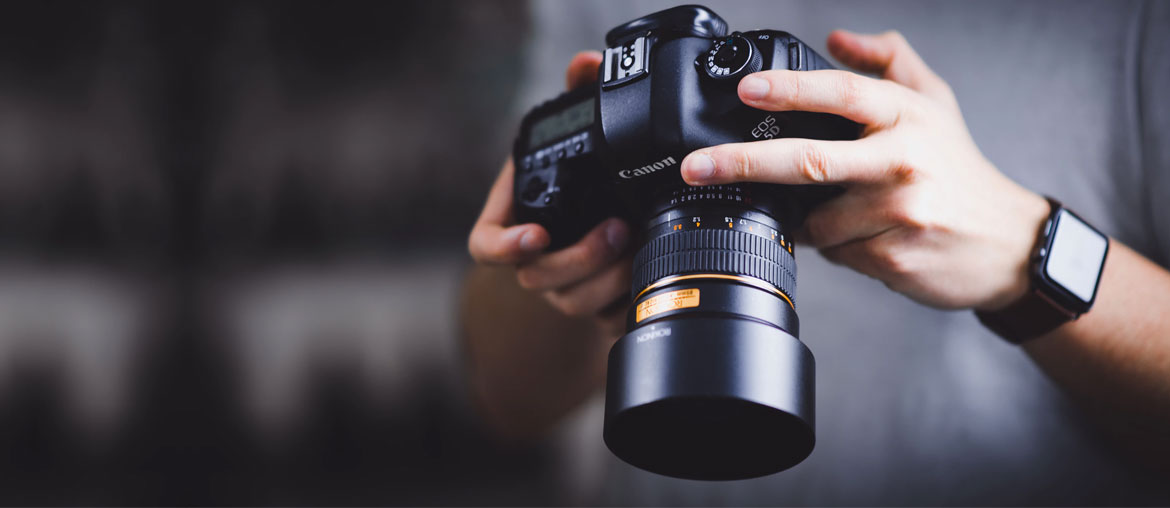If there’s one single element of a vacation rental listing that can make bookings without the help of anything else, it’s the property photos. Likewise, if there’s a single element that can bring down an otherwise perfect listing, it’s the photos. So the question is – why wouldn’t you put effort into them?
Professional real estate photographers aren’t exactly hard to come by (unless you live in an extremely remote area). Sometimes the price is a little steep, but unless you’re going into triple zeros for a single property, the price is probably justifiable considering the amount of business it can bring.
While the number one recommendation is always to go with a professional, you may have reason to want to take your own photos – and there’s nothing wrong with learning something new!
So here’s a few pointers to help you take effective, professional-looking property photos:
Camera
This is a huge subject that deserves much more attention than we’ll be giving it here – but the purpose of the article isn’t to make you a professional, just to give you some professional results in a very limited scenario.
Smartphone Cameras
For professional photographers reading this, please forgive me for what I am about to say.
An iPhone camera is not a terrible option. If two people were given an iPhone and a $5000 DSLR with Zeiss lenses to take pictures of their property for the first time, I fully expect the iPhone user to come back with more presentable images. The learning curve for DSLR photography is far steeper than an iPhone, even with auto white balance & focus settings.
An iPhone camera has a suitable aperture size that allows for bright, vibrant images with a nice long depth of field (adjustable f-stop). Read more about how to make these adjustments here.
For more on this subject, check out this article here.
DSLR Cameras & Lenses
For those of you who are willing to put a little more work in and prefer having an expanded set of capabilities (and who also have an expanded wallet), a DSLR camera body paired with an appropriate lens will take you to the next level. Well, it will take you there if you learn how to use it properly.
There are tons of tutorials out there that’ll give you solid advice for setting up your camera to take indoor & outdoor property photographs. They’ll all be quite lengthy, but there’s really no shorthand way to teach someone the concepts that go into great photography. We can point to some equipment though.
For lenses, anything on this list will serve you well. Yes, they are expensive – the lens selection is arguably more important than the body selection. You’ll note that the specifications of the lenses tend to have a range of 15 – 30mm focal length, and have a max aperture between 3/f and 4/f. Cheaper options in that range should suffice.
For DSLR bodies, the technology changes fast enough that you’ll be able to pick up a used piece for significantly less than brand new that’ll produce excellent results. Just make sure you purchase from a seller of some repute – they’re sensitive pieces of equipment that can be bested by a few grains of sand. Canon’s Rebel line has been the standard for “instant photographer” jokes for a while – that’s because they’re great bodies for a reasonable price. Just don’t go advertising yourself as a photographer until you learn to use it.
Lighting
Lighting is the most important (non-equipment related) element of any photo. Everything you can see right now with your own two eyes is the reflection of light from that objects surface. Everything.
Now consider this: your camera does not have the same eyesight as you. It receives the reflections of light from whatever it’s pointed at, just like your eye, but its brain (CCD chip) interprets the colors and brightness differently. You can make adjustments to your camera’s white balance settings, f-stop, shutter speed, and lens size that’ll all affect the amount of light in the resulting image. But the general rule of thumb is this: you cannot create light that wasn’t there in the first place.
As in, you need to manually light the room & objects you’re shooting. In some cases, having wide open curtains behind you on a sunny day is all that’s needed. Others require some well-placed photography flash bulbs or light stands aimed strategically to eliminate shadows cast. The quality of light makes a difference – the same way you prefer to have soft incandescent bulbs in your bedroom, but bright white lights in the kitchen.
So how do you get magazine worthy room lighting? Usually a few strobe lights on stands and reflector panels to diffuse or direct light. That doesn’t mean anything unless you have the equipment though.
There’s plenty of DIY tutorials on Google for “DIY room photography lighting”, but the price of three strobe lights on stands and a couple panels isn’t as high as it used to be. It’s a good idea to out the prices before you commit to DIY methods.
You should also read one of the many guides on interior lighting methods – this one here has some nice diagrams of strobe/panel positioning to get you started. There’s a theory behind it that can be poorly summarized: where one light casts a shadow, another light is used to negate that shadow. Of course it’s more complex than that, but it’s a good rule of thumb.
Composition
Composition of a photo is simply the things that are visible. There are two factors in this: framing and arrangement.
Framing is essentially just the position of your camera. Your lens width also affects framing, and since we’re dealing with wider lenses and large spaces, it’s safe to say that you’ll usually be quite a few steps back from the objects of interest.
Arrangement, however, is something you’ll be spending more time on with your room photography. Don’t be afraid to dress things up, clean everything and arrange your furniture and furnishings to have parallel lines, symmetry, etc. Every little detail can be arranged for maximum appeal and minimal clashing.
While it’s nice to have a central focal point in your photos, don’t forget that you are wanting potential guests to see the whole space! Make sure you get some shots that are panned out and include all of the room’s features before you start moving in to particular objects – these photos are your listing’s priority.
If you don’t have a natural eye for framing shots with multiple subjects, go ahead and read about the rule of thirds and try putting the theory into action.
Editing
And finally – the greatest secret of all modern day digital photographers – HDR. If you have some lights and are properly versed in the art of HDR photography and editing, you can make magazine worthy photos. We can’t go into the details, and it’s not exactly a beginner method – in fact, it shouldn’t even be mentioned in this article. But with so many people out there who are familiar with Photoshop, it’s worth the research.
Really, the HDR mode photography is something that can be considered an extension of lighting. It’s highly recommended if you’re going the length of getting all the equipment you need to take great photos.
For those who are a little less versed in Photoshop, but still want to do some touchups, do some quick reading on Levels, Curves, Color Balance, and Hue adjustments (in the Adjustments menu). Knowing how to work with those will do wonders for your finished photos.





